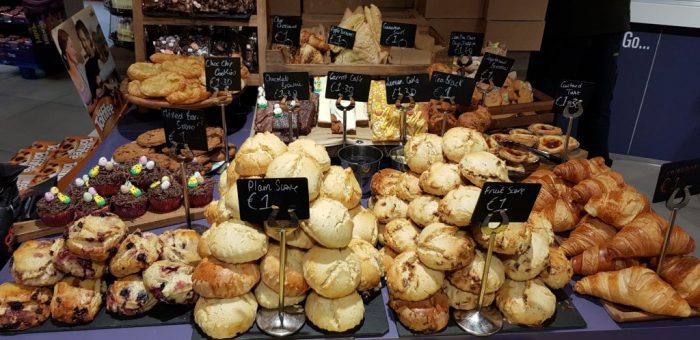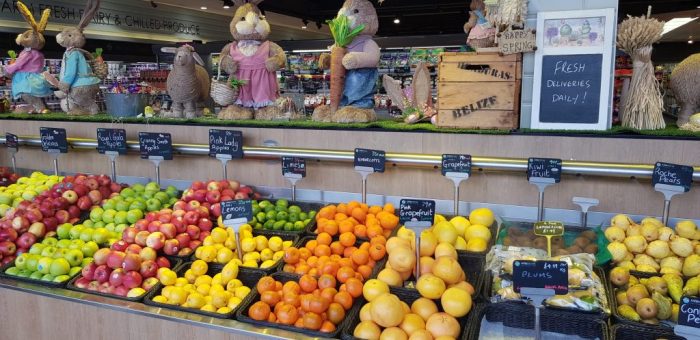Food margins are notoriously slim, so figuring out how best to control your food costs, more often or not boils down to a do or die scenario. Food costs play a huge role in any food service’s success or failure – that soupe à l’oignon might be amazing, but not if it puts a dent into your profits.
But first, what is food cost? It’s a percentage of total sales spent on food product, so think of net food purchases, divided by net food sales. A good rule of thumb to live by is to maintain a 30% food cost or even lower if possible! A good place to check further on how to calculate this, would be here.
How do people maintain a good food cost percent? Controlling food costs is diverse, there’s not one solution for everyone, although it’s simple to adapt to. Make sure you’re only ordering as necessary, cooking seasonally, having more than one vendor and maximise what you’re using. Keep your finger on the pulse of your food costs at all times, don’t cut corners!
Here are a few more key factors to take into account that may help you with your food costs in future;
1. Track Food Prices
It pays to track food prices where possible, to know whether they are predicted to increase or decrease – knowing this in advance can save you a great amount as you’ll know current and future trends.
Depending on where you are based and what country you operate in, you will have different sources to track and find these prices. You’ll be able to see trends where the increases and decreases aren’t consistent, especially when you can factor in sharp increase for specific products over the past few years.
By tracking these prices you’ll be able to adapt and revamp your menu and/or supplier lists so you are able to include more affordable alternatives. You may even want to consider less expensive cuts of meat but at the same time offering more options of other goods whilst prices are lower.
Check out this blog by Stocktaking.ie to see their own research on Price vs Value for costings.
2. Purchasing Raw Materials On Credit To Reduce Costs
Controlling your food costs by making sure you conduct all your purchases through a business account on a credit basis is a good way to start, this way you can minimalise cash transactions. Most of the times, raw materials that are purchased with physical cash are much more expensive and are less in quantity as compared to when buying in bulk.
When buying raw materials on credit, it allows you to run your food service to generate the revenue and then pay off the used credit for the money you have made. Remember to consider the credit period before deciding on a vendor to purchase from. Most vendors usually stick to 15-20 days but it may differ, but just be sure to establish some rules of receiving, ordering and payment.
If possible, joining a purchasing group will certainly help you to lower your food costs. This will be touched upon more next to explain why!
3. Join a Purchasing Group
As briefly mentioned above, joining a purchasing group is a quick and easy way to enjoy lower food costs. You may ask why? Well, due to the sheer volume of purchasing power, suppliers simply often offer lower prices.
This is a great opportunity for independent stores and businesses to compete with huge franchises and chains that have massive purchasing power, presence and negotiation options.
A great example of a purchasing group is Farm Solutions Limited (Ireland) check them out here and read what they’re about!
You should remember that while putting some pressure on suppliers is inevitable and necessary, you may fail at a relationship level with them, so you need to find a fine balance.

4. Reduce Employee Turnover
Another point that you may not think about, although it is rather crucial, is to make sure you reduce your employee turnover. This is a very critical area where all business owners must pay attention to keeping your employees happy and retaining them.
It’s not an easy task to find a high quality employee with the skills you want, especially with a likable attitude, work ethic and effort involved. You need lots of resources to hire them and to train them in key areas of your business as a lot of business operate differently. Think of a situation where you spend a couple of weeks training that new employee, spending all those hours on showing them the ropes only for them to leave a few weeks after into their job – all that time spent is lost, which is lost money.
You want employees to stick around for a long time, make favourable conditions for them to ensure they’re committed to your business and are happy working for you. This will save food costs in the long run as you’re no longer having to spend time hiring & training potential employees.
5. Manage Your Food Orders
When ordering produce, make sure you’re aware of the specifications of your food for your order. Food is inspected in every country (well, it should be!) and sorted into freshness, quality and appearance grades. Most of the times it’s purely cosmetic, so the difference between a grade 1 & 2 piece of fruit such as an apple won’t have much difference at all, so it’s good to go for the grade 2 piece of fruit as it will save money and it won’t sacrifice the taste too much.
The harder you’re willing to work, the more you can save on your food costs when it comes to food orders. Such as, when buying certain produce that has already been skinned, de-boned or de-feathered are going to be more expensive due to the labour cost going into them. By taking some time out of your own schedule, you can just do the prep work yourself and save some costs here and there.
As previously mentioned in the first point, be sure to keep track of food prices that are constantly changing. Additionally it would be wise to research into seasonal food to keep your menu fresh and save costs on buying local produce – this heavily depends on location though!
A great app to help you with this is Zuppler, check them out and see how they can save you time by being a reliable, fast and secure solution!

6. Keep Your Staff Informed
It is vital to make sure your staff knows the prices of the food in your premises – their actions could be either saving your money, or costing you money that you didn’t expect to be spending. This is mostly all down to food prep processing, such as unnecessary waste. While it may seem insignificant at the time, it all builds up and can compound to become a huge loss.
So long as your staff are knowledgeable about how much the food costs and use it properly, they will take much greater care in making sure the food is portioned correctly and not wasted as often.
7. Decrease Waste
Make sure you’re adamant in training your employees about certain rules to not waste food – wasting food is wasting money! Lots of highly perishable foods have a higher food cost than most, so you need to make sure this is being used and not being over-ordered only to continue being wasted, this could lose you hundreds!
Try to teach your employees to be creative with the scraps of food left over, make sure they understand the value of using everything. For example, a restaurant can use a lot of pieces of food that are scraps to bulk up dishes or create extra dishes. A good idea would be to order protein and other short life items daily instead of weekly so you’re not in a huge rush to sell or bin that mouldy piece of chicken!
A great PDF fact sheet full of statistics and market research can be found on the EPA.ie website.
8. Recipe Costing – Get The Right Mix
If you have a higher than expected food cost, it is worth your while to undertake a costing on each dish that you serve. This way you can identify the least/most profitable dishes to sell based on the portion size. You can then make adjustments to portion size, the selling price or to the cost of the ingredients. Your sales mix of these dishes will then determine your profit margin so the higher percentage of high cost dishes you serve, then the lower your profit margin will be, and vice versa. Get the mix right where possible.
Closing Thoughts
That’s the majority of our own ideas on this topic, although we’re sure there’s much more out there that you could be doing! Be sure to always shop around and using your own negotiating power to find and secure better and cheaper deals. Everything is negotiable.
Make sure to stay on top of numbers, never slack off or cut corners as you may not feel it now, but you certainly will in the long run. Stay organised, collected and informed about where the costs are, where the waste is and what can be improved on at all times. Be sure to cut down on all stocktaking mistakes too, you can lose money here!
You can even improve other areas of your business that will in time help with managing your food costs and improve profits.
Keeping your stocktakes in-house with Digitally is considerably cheaper than an external service. You’ll reduce stocktaking times by up to 68%, have an instant valuation of your counted stock and see where your waste is. All you need is your own mobile device to get going, no external hardware is required.



